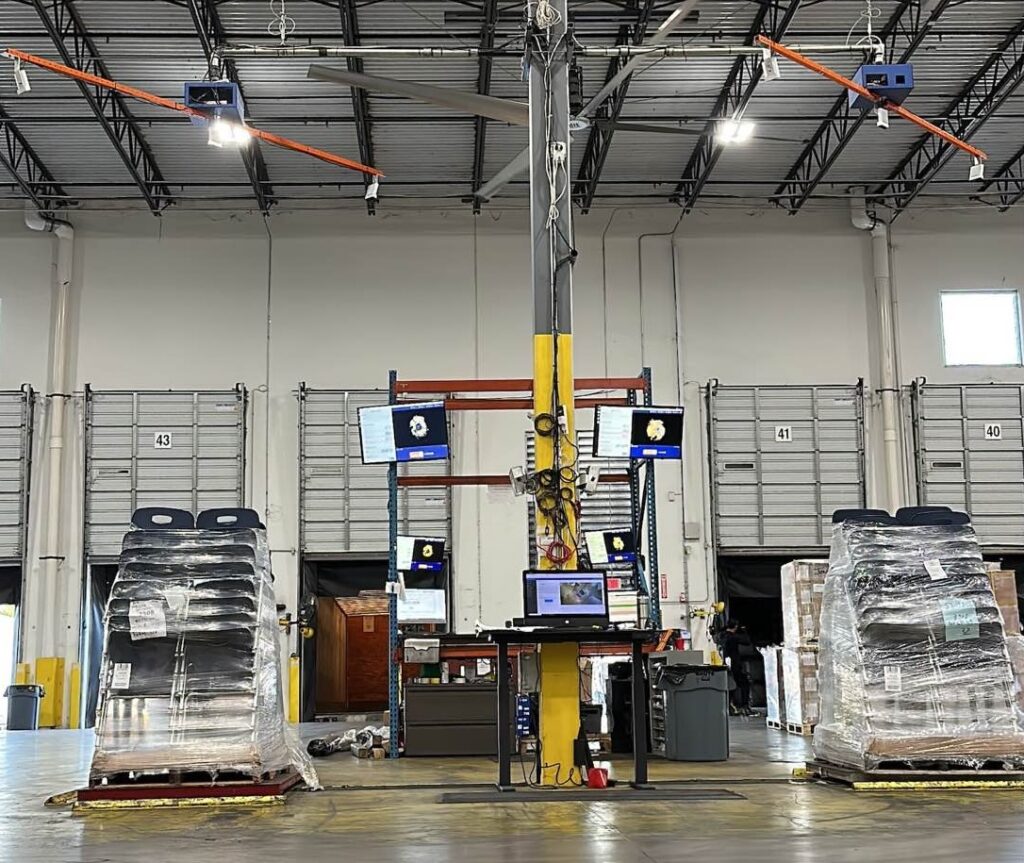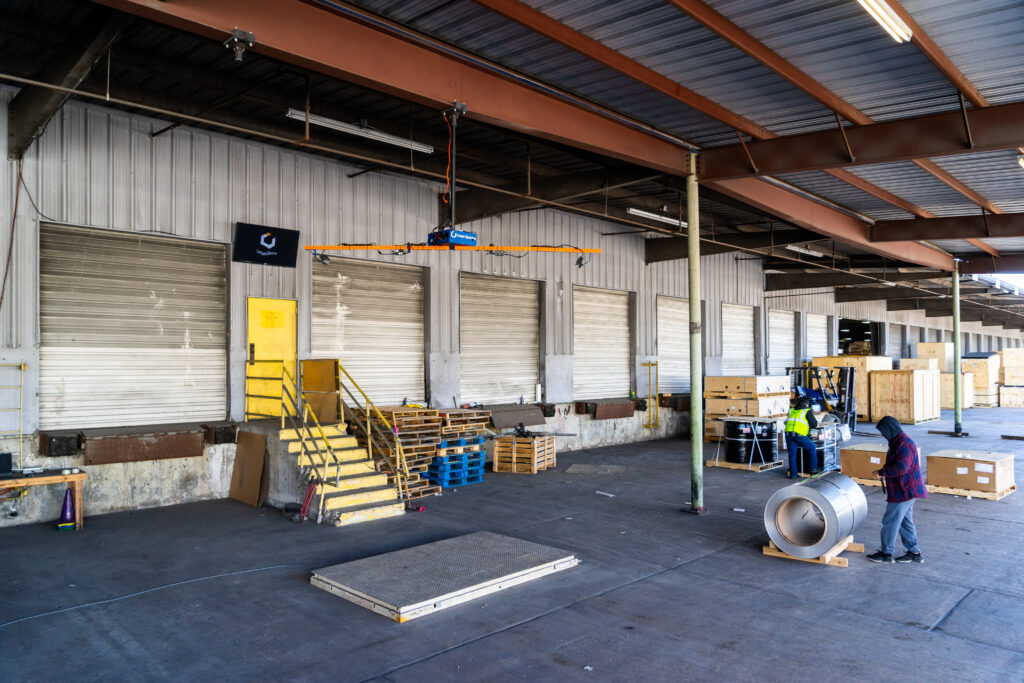Just in case you missed it, a whole new era has begun for LTL shippers and others in the U.S. logistics industry. With the National Motor Freight Traffic Association’s (NMFTA™) shift to density-based freight classes taking effect in July 2025, plenty of warehouse managers and operations executives are still scrambling to find the most practical and cost-effective solution to applying the new NMFC freight classification changes. The question isn’t whether your warehouse operations need to adapt—it’s how quickly you can implement a solution that ensures compliance while maintaining (or even increasing) operational efficiency. It’s a challenge that has more LTL warehouses than ever shopping and comparing dimensioning systems. Here’s why:
New NMFC Freight Classification Changes are Here
The NMFTA™ is leading a revolutionary change in how freight is classified across the U.S. Moving away from the traditional commodity-based system, the new density-based classification model requires precise dimensional measurements and weight calculations for every shipment. This isn’t just a minor adjustment—it’s a complete overhaul that demands different tools and processes to keep LTL warehouse operations optimized and profitable.
Under the new NMFC freight classification changes, NMFC codes depend entirely on calculating freight density (pounds per cubic foot). Without accurate dimensions, you’re operating blind, risking costly reclassification fees, delayed shipments, and strained carrier relationships. The stakes are high for getting classification right the first time.
Why Manual Freight Classification Methods Fall Short
Many LTL warehouses are still relying on manual measurement techniques, but this approach creates bottlenecks and slowdowns in high-throughput environments. Manual NMFC freight classification is time-consuming, error-prone, and simply unsustainable when processing hundreds or thousands of shipments daily. Small, human errors in dimensional measurements can lead to incorrect density calculations, resulting in misclassification that triggers expensive corrections downstream.
The math is unforgiving: A single measurement error of just a few inches can shift your freight into an entirely different class, dramatically impacting shipping costs and delivery timelines. Can your operation afford these risks in today’s competitive market? We’re hearing from many new clients that they aren’t willing to take that chance. It’s why our team worked diligently to create an easy, automated solution to the challenge of density-based NMFC freight classification.
Cargo Spectre: The Automated Freight Classification Advantage
Cargo Spectre dimensioning systems represent the highest evolution yet of NMFC freight classification technology. Our automated approach eliminates human error while delivering the speed and accuracy essential for modern warehouse operations. When every shipment matters, precision isn’t optional—it’s mandatory.
Our dimensioning systems use time-of-flight (ToF) sensors to capture precise measurements in seconds, automatically calculating freight density and applying instant NMFC codes. This isn’t just faster than manual methods; it’s fundamentally more reliable. Cargo Spectre systems maintain consistent accuracy regardless of operator skill level, training, or workload pressure.
But Cargo Spectre dimensioning systems go farther than our competitors. We’ve created a secret weapon to provide our clients with the highest possible accuracy in generating correct NMFC codes!
Introducing Our Freight Classification Plugin Powered by ClassIT+™
The cornerstone of our NMFC freight classification solution is our new automated LTL freight classification tool powered by ClassIT+™—the only classification platform that connects directly to the authoritative NMFC database, powered by the NMFTA. This revolutionary freight classification plugin for our Spectre Link software represents a groundbreaking partnership between Cargo Spectre and NMFTA, ensuring our customers receive the most accurate and up-to-date classification data available.
Through our partnership with NMFTA, Cargo Spectre now offers ClassIT+ API data directly to our customers, eliminating the guesswork and uncertainty that plague traditional classification methods. This direct connection to the authoritative NMFC database means you’re accessing the same data that carriers use, ensuring perfect alignment and eliminating costly disputes.
Now ClassIT+ transforms raw dimensional data into actionable classification codes in real-time, applying official NMFTA™ guidelines automatically to ensure every shipment receives the correct classification. Palletized freight receives an NMFC code you don’t like? Your team can now repack that pallet right on the dock and rescan to achieve a more cost-efficient freight class.
Best of all, this instant, automated freight classification tool is a part of Spectre Link, which means it integrates seamlessly with existing warehouse management systems. Now, you can eliminate workflow disruptions while dramatically improving classification accuracy with the Cargo Spectre software you already use!
Real-World Results That Matter
Cargo Spectre clients consistently report classification time reductions of 90% or more while maintaining accuracy levels that exceed manual methods. These aren’t just efficiency gains—they’re competitive advantages that compound over time. Faster classification means higher throughput, reduced labor costs, and improved customer satisfaction.
Our systems handle everything from small parcels to oversized freight with a single unit, providing the flexibility essential for diverse warehouse operations. Whether you’re warehousing e-commerce packages or industrial equipment, Cargo Spectre delivers consistent, reliable NMFC freight classification powered by the industry’s most authoritative data source.
Our partnership with NMFTA ensures that your classifications aren’t just fast and accurate—they’re definitive. When you use our freight classification tool powered by ClassIT+, you’re accessing the same authoritative database that defines industry standards, eliminating the risk of carrier challenges or reclassification disputes.
The Hidden Cost of Waiting
If you aren’t classifying your freight using computer vision linked directly to the NMFTA database via ClassIT+, you’re taking a risk. Reclassification fees, delayed shipments, and operational inefficiencies add up quickly. The NMFC changes aren’t suggestions—they represent a fundamental shift in how freight is valued that demands immediate adaptation.
Cargo Spectre systems pay for themselves in a few months through eliminated reclassification fees, reduced labor costs, and improved operational efficiency. With direct access to the authoritative NMFC database through our ClassIT+ partnership, you’re not just investing in automated dimensioning technology—you’re investing in the gold standard of freight classification speed and accuracy.
Optimize NMFC Freight Classification Now
Don’t let the new density-based classification requirements cut into your organization’s profits! Cargo Spectre dimensioning systems—now featuring automated freight classification powered by ClassIT+—provide the complete solution you need to instantly apply fast, accurate, and cost-effective NMFC codes to every pallet. Your customers will appreciate that each code is retrieved via direct access to the NMFTA’s own, authoritative NMFC database.
Cargo Spectre is the first dimensioning system to provide classification data straight from the source, ensuring perfect accuracy and eliminating costly disputes. This isn’t just another freight classification tool—it’s the definitive solution for the new density-based era.
Contact Cargo Spectre today to discover how our dimensioning systems can streamline your freight classification process!






